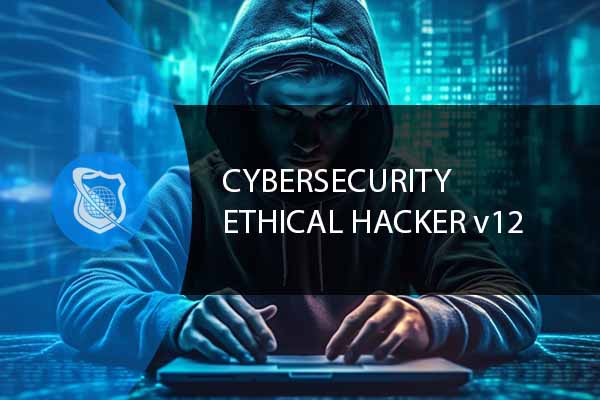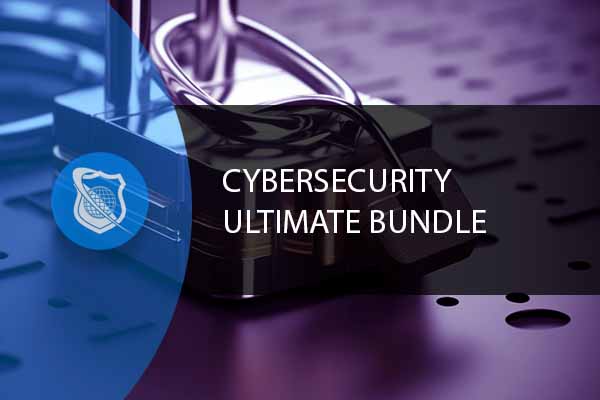$0.00
Certified Ethical Hacker v12 is the latest iteration of EC-Council’s Certified Ethical Hacker v12 series. ITU offers CEH training to provide you the tools to research, discover and scan targets, analyze vulnerabilities and test attack methods and tools. The focus of this CEH online training course is to solve the challenge of breaking into a target network, collect evidence of success, and escape unnoticed. Every lesson and topic are infused with step-by-step guided practice using real hardware- and software-based hacking tools. Throughout both lecture and hands-on activities, the instructor, Chrys Thorsen provides commentary from the field including tips, tricks and hard-learned lessons.

Embark on a transformative journey with our CEH training, the latest version in EC-Council’s Certified Ethical Hacker series. This CEH training for ethical hacking is meticulously designed to arm you with the skills to scan, analyze, and penetrate target networks. The course offers a blend of theory and hands-on activities, guided by experts sharing invaluable tips, tricks, and hard-learned lessons from the field. Our CEH training is presented by Chrys Thorsen, a certified ethical hacker and cybersecurity expert in her field.

Embark on a Thriving Cybersecurity Career! With our Ultimate Cyber Security training courses, you’ll dive into the world of ethical hacking, penetration testing, and network security. Our 15 comprehensive courses, led by industry experts, will equip you with essential Cybersecurity skills, setting you on the path to success in this ever-evolving field.
The CEH training cost for certification varies. To maintain your certified ethical hacker certification, you’ll need to earn Continuing Professional Education (CPE) credits over three years. For complete costs related to taking the CEH exam, visit the governing body, EC-Council website.
Pair your ethical hacking cert CEH training with our PenTest+ course to become a top-notch penetration tester. Our Ultimate Cybersecurity Bundle offers a comprehensive ethical hacking certification training, setting you on the path to success in this ever-evolving field. Start your CEH training today to propel your ethical hacker career.
This CEH training course is ideal for:
While no strict prerequisites are required, prior to beginning your CEH training, we recommend prior knowledge of networking and general web security principles. Completing CompTIA Network+ and CompTIA Security+ courses or equivalent before embarking on your CEH training is highly recommended. You’ll also need a 64-bit PC with VMware Workstation Player, 8GB+ RAM (16GB preferred), and 100GB of free disk space, running Windows 10 Professional or later.
Certified Ethical Hacker – CEH certification is one of the most sought-after certifications in the cybersecurity industry. ITU offers CEH training in both V11 and V12. It is an entry-level certification that validates an individual’s understanding of ethical hacking methodologies. EC-Council, the organization behind the CEH certification, has been updating the certification to keep up with the changing cybersecurity
In the digital age, securing networks and data has become a top priority for organizations across all industries. As such, the demand for qualified cybersecurity professionals is steadily on the rise. The Certified Ethical Hacker (CEH v11) Training is a prominent course that equips you with the skills and knowledge
In a world that is becoming increasingly digital, the importance of cybersecurity cannot be overstated. Our reliance on technology has grown exponentially in recent years, with everything from our personal information to our critical infrastructure being stored and managed online. This digital transformation has brought about many benefits, such as improved communication, increased efficiency, and access to new markets. However, it has also made us more vulnerable to cyber attacks.
If you’ve ever pondered the question, “how much is a hacker paid?”, you’re in good company. This query frequently occupies the thoughts of aspiring cybersecurity professionals, as well as organizations on the hunt for qualified ethical hackers.
Does it really work? Short answers to these questions are clear: ‘Yes. Certified Ethics Hackers are an excellent investment that will only help you gain valuable skills. CEH provides an important qualification for your future career in addition to technical knowledge.
To become CEH a certified ethical one, you can follow these steps:u003cbru003e1. Take the Certified Ethical Hacker (CEH) course certification, which typically involves five days of trainingu003cbru003e2. Learn about the latest cybersecurity and information security threats, and develop the practical hacking skills needed to work as an a certified ethical hackeru003cbru003e3. Pass the CEH exam which consists of a total of 125 multiple-choice questionsu003cbru003e4. Maintain your certification by earning 120 Continuing Professional Education (CPE) credits within three yearsu003cbru003e5. You can earn CPE credits by attending conferences, writing research papers, teaching training classes in a related domain, reading materials on related subject matters, and attending webinars
The Certified Ethical Hacker (CEH) certification exam, is a 4-hour exam with 125 multiple-choice questions. To become a Certified Ethical Hacker, prepare for the exam by taking our comprehensive CEH training and then complete the certification exam. The length of time it takes to prepare for the ceh certification training and exam can vary depending on your existing knowledge and experience, but it could take anywhere from a week to several months. To take the CEH certification exam, you need to fulfill one of two prerequisites and be over 18 years old
The CEH certification is valid for three years from the date of certification. To maintain your certification, you are required to earn Continuing Professional Education (CPE) credits. These credits can be obtained through various activities such as attending training programs, participating in webinars, writing articles, and engaging in professional development activities related to ethical hacking and information security. By earning a sufficient number of CPE credits within the three-year period, you can renew your CEH certification.
Dean has had fun for the past 20 years learning and teaching everything he can in technology and security. His consulting experience in accounting systems, inventory control, migrations, and patch management has breathed life into his 12 years in the class room. Dean is a courseware developer who specializes in CISSP and security training. He is the lead instructor for Expanding Security and teaches online as his main job. As a non-military person, he is a proud recipient of six mission coins.
Chrys Thorsen is an education and technology expert who specializes in enterprise-level IT infrastructure consulting and certified training-of-trainers. In her career, she has garnered over 50 IT Certifications including CISSP, CISA, CEHv12, PenTest+, CompTIA CNVP, Cisco CCSI/CCNP, Microsoft Cloud and on-premises technologies, VMware vSphere, and many more. She has also authored 40 published certification textbooks, and over 35 full-length IT certification video courses.
When not working in the United States, Chrys spends her time abroad capacity-building IT literacy in developing nations in Sub-Saharan Africa. Her client list has included: the US Federal Government, the Republic of Zambia Ministry of Health, Cavendish University Zambia, Accenture, JP Morgan Chase, the US Centers for Disease Control and Prevention, the Elizabeth Glaser Pediatric AIDS Foundation (EGPAF), Hughes Aircraft, Microsoft, and many more.
Chrys lives by, and is fond of repeating, her professional creed:
“The only true measure of success for any project or training is results on the ground. Everything else is just noise.” “I teach what I deploy; I deploy what I teach.”
Josh has 15 plus years in account management and client support with over 5 years specifically in the healthcare industry. Josh provides hands-on leadership to the healthcare team at NetDirector by focusing on client success and innovative solutions. As the Healthcare Operations Manager, Josh ensures that each client implementation is completed as efficiently as possible with the greatest impact to the client. He holds a Bachelor of Arts degree from the University of South Florida.

Get 1-year full access to every course, over 2,600 hours of focused IT training, 20,000+ practice questions at an incredible price of only $79.00